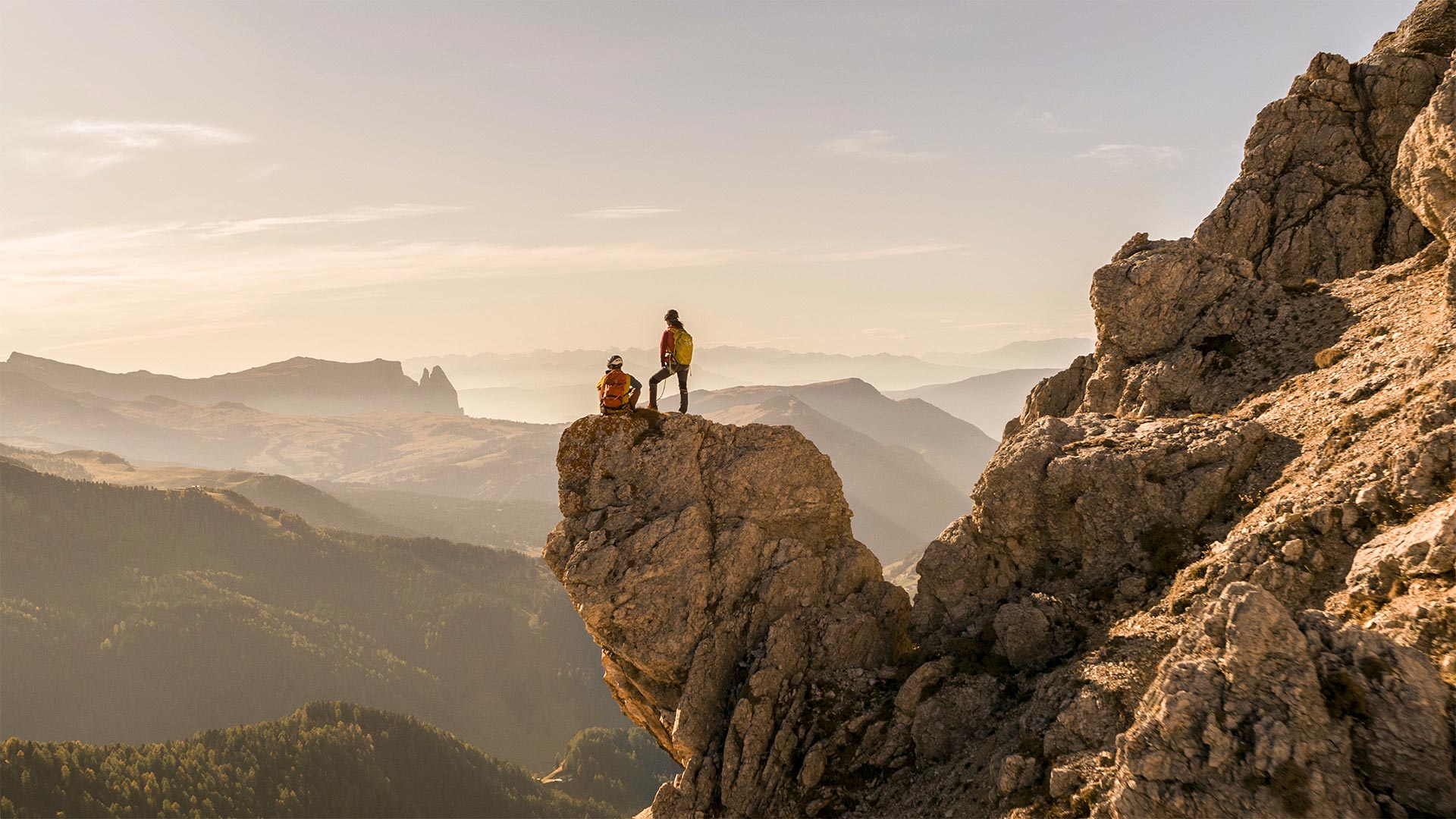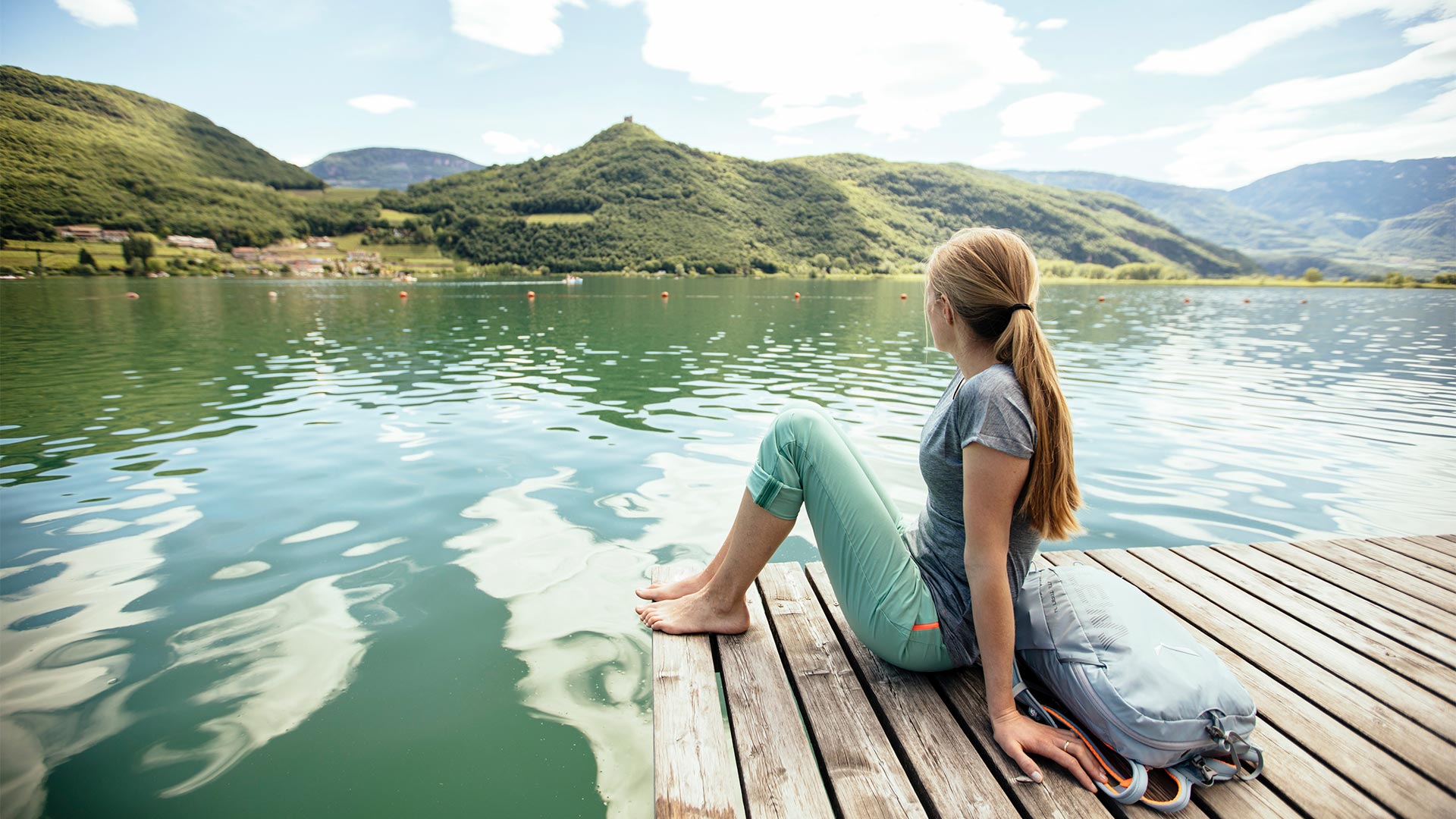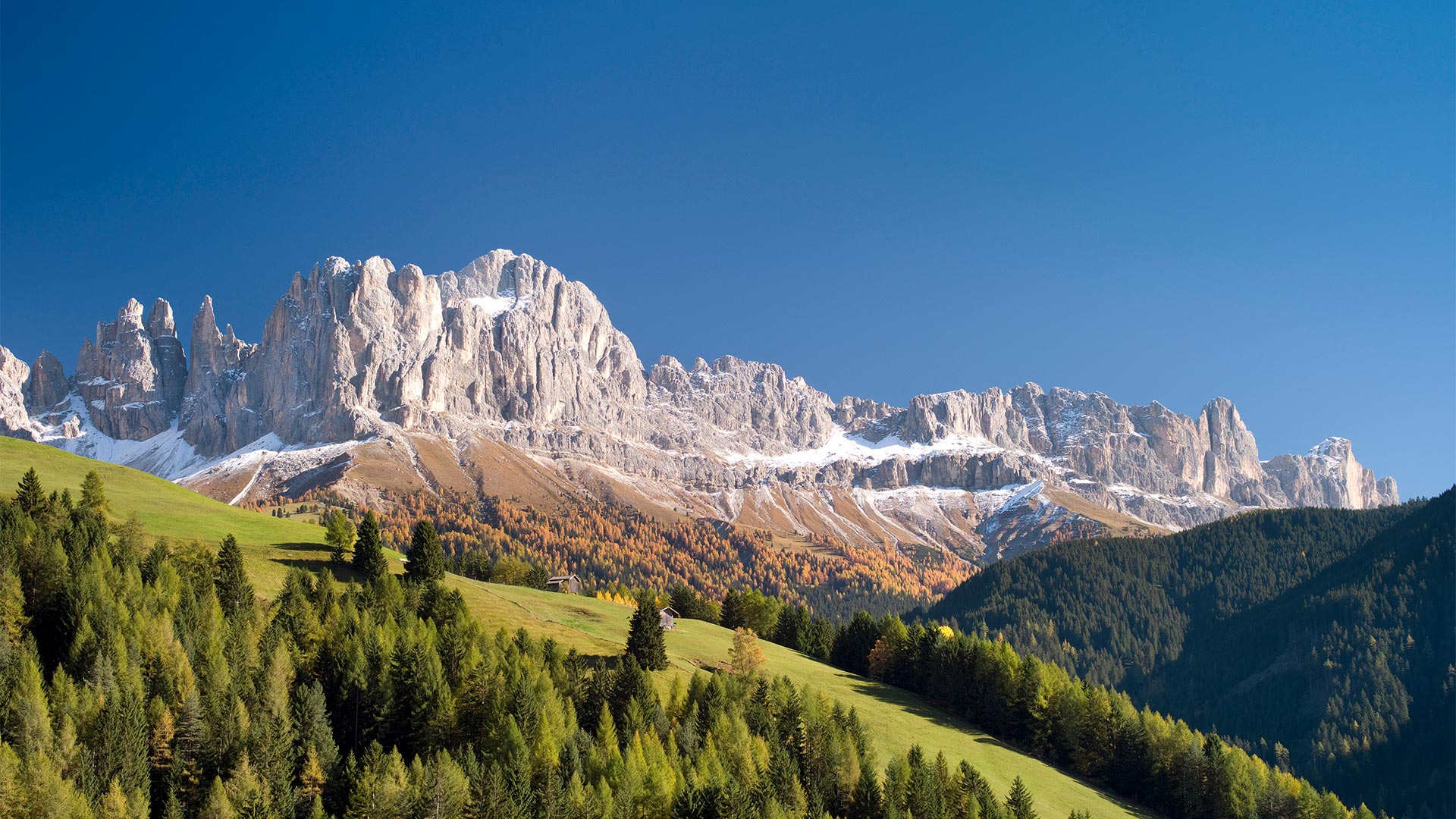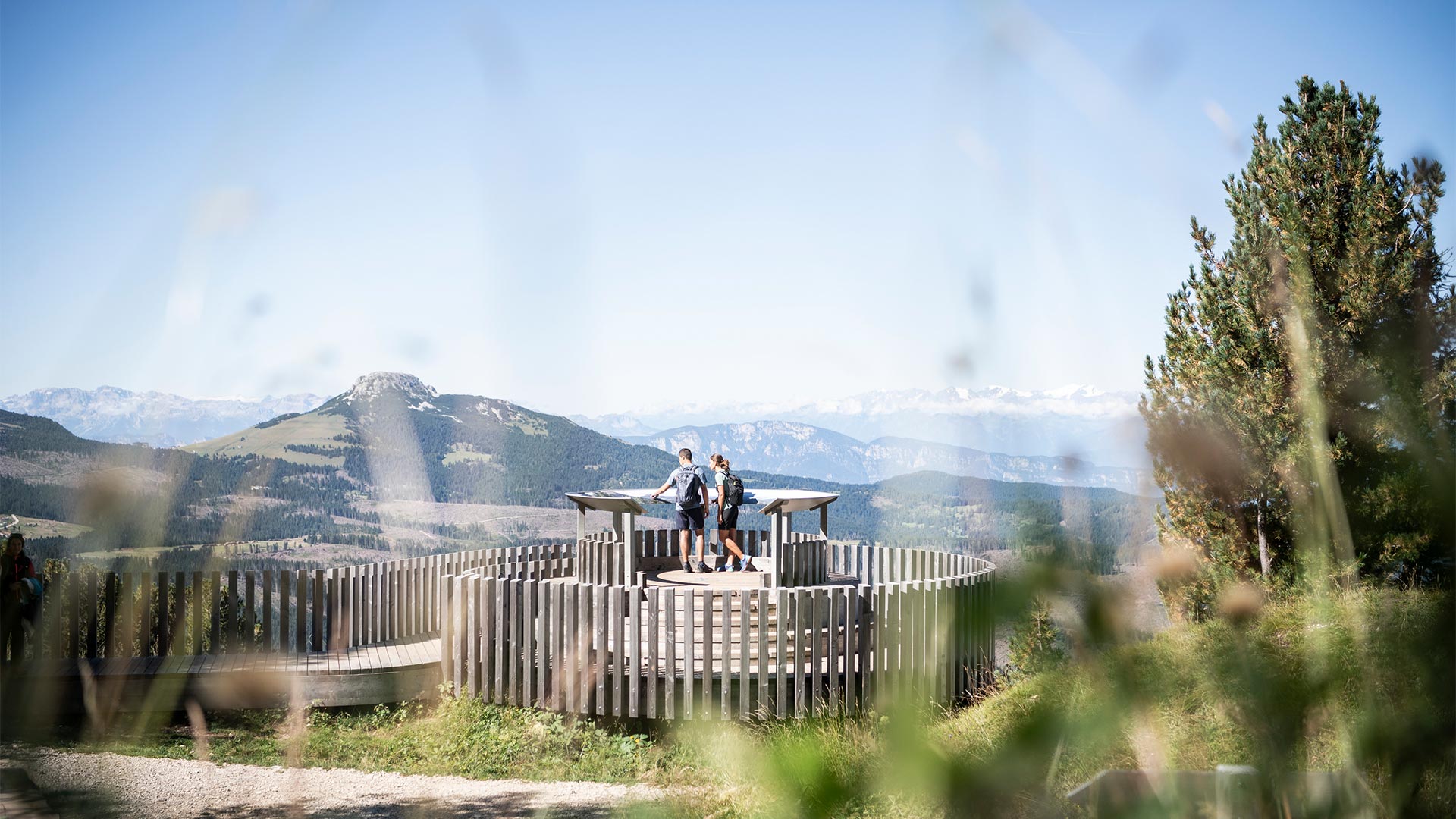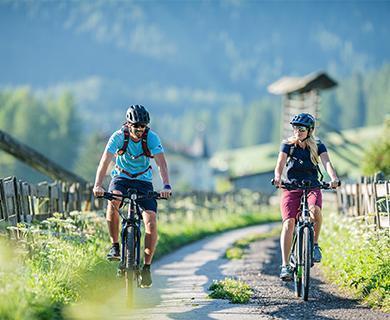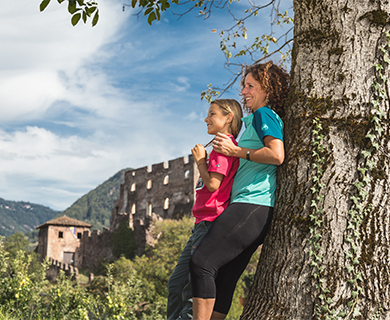One step away from Bolzano
Bolzano offers its visitors an urban and stimulating environment, but it only takes a few minutes to reach true oases of peace.
Dolomites
Visible from all parts of the city, the the Dolomites are a mountain range of outstanding natural beauty. In 2009, they were recognized by UNESCO as a World Heritage Site.
The name "Dolomites" comes from the rocks known as "dolomia," named in honor of the French naturalist Déodat de Dolomieu (1750–1801), who was the first to study their unique chemical composition (a double carbonate of calcium and magnesium). Due to their special composition, the white rocks are tinged with gold, pink, orange, red, and purple at sunset and sunrise. This natural phenomenon, known as Enrosadira, is tied to many local legends, the most famous being the tale of King Laurin and his rose garden on the Catinaccio.
To enjoy a panoramic view of the Dolomites, we recommend a trip to Soprabolzano, Collalbo, or the Corno del Renon.
For the full Dolomite experience, you can easily reach Obereggen, Lake Carezza, and Alpe di Siusi in just 30–40 minutes by car or public transport.
Obereggen is one of the most popular ski and hiking destinations in the Dolomites. Only 20 minutes from Bolzano, it offers breathtaking alpine experiences in both winter and summer.
Cableways
Bolzano is situated 265 meters above sea level, in a basin surrounded by mountains. In just a few minutes by cable car, you can reach the sunny plateaus and beautiful forests on the Renon Hills and Colle, where you'll experience a crisp, fresh atmosphere. At altitudes ranging from 1,000 to 1,400 meters, you'll enjoy superb views of the Dolomites and breathe in the delicate scents characteristic of woodlands and pastures.
Wine Road
The famous South Tyrolean Wine Route, which begins in Nals and stretches through the Oltradige and Bassa Atesina to Salorno, also passes through the South Tyrolean capital. The picturesque villages along the Wine Route captivate visitors with their traditions, the local way of life, and their authentic charm. Traveling along this route is like embarking on a journey to discover the origins of South Tyrolean winemaking.
https://www.suedtiroler-weinstrasse.it/en.html
Colle
Colle represents tranquillity. It features vast forests and a stunning mountain landscape with numerous walking opportunities— all just a few minutes from the city. Colle is the northernmost peak of the hills south of Bolzano, which extend as far as Corno Bianco, bordered to the east by Val d'Ega and to the west by the Valle dell'Adige. Near the mountain station, a lookout tower offers a panoramic view of the central Alps' peaks and glaciers, as well as the nearby Dolomites.
The best way to reach this peaceful oasis is by cable car, which is the first of its kind in the world to transport people.
Timetables
Hiking
With its numerous footpaths and marked hiking trails, Colle is an ideal starting point for excursions on foot, by mountain bike, or horseback. The European long-distance hiking trail E5, which stretches from Lake Constance to Venice, is perhaps the most famous trail. In the hiking map, you'll find suggested routes and a list of restaurants, complete with their opening hours. Click the picture to download the PDF or order the map for free by mail using the following link.
Raffeiner Orchid World
Located in Gargazzone, just a few minutes by car from Bolzano, the Raffeiner Orchid World is a tropical-inspired park dedicated to the queen of flowers— the orchid. Spanning 6,000 square meters, it offers the opportunity to touch and smell around 500 different species of orchids.
Laives - Leifers
Laives, the youngest of South Tyrol’s eight cities, is located south of Bolzano, surrounded by a sea of apple orchards. The municipality of San Giacomo merges seamlessly with a quarter of the provincial capital bearing the same name. Though it is often associated with Bolzano, Laives is not a suburb—it has its own proud history. Archaeological finds indicate that the region was settled as early as the Iron Age. Laives first appears in historical records in 1237 and became an independent municipality in 1819. It was granted city status in 1985.
The town of Laives, along with the municipalities of Pineta, San Giacomo, and La Costa, is home to approximately 18,000 residents. Laives is a cultural melting pot, where Germans and Italians live side by side. Though they may favor different pastimes—Germans enjoying the card game “Watten” while Italians play “Briscola”—the lifestyles of these two communities increasingly overlap. At Christmas, both the traditional Zelten Christmas cake and the Italian Panettone are enjoyed. Village fêtes, Sacred-Heart fires, Törggelen celebrations, throwing rice at weddings, and a relaxed lifestyle appeal to both sides.
Historically, Laives was an agricultural hub. In the 19th century, it became an important center for porphyry mining, wood processing, and silk spinning.
The village's landmark is the Chiesa di San Pietro, which is also featured on the town’s coat of arms. Dating back to the 12th century, the small church was once the chapel of Castello Lichtenstein. While only a few castle walls remain, the Chiesa di San Pietro has been preserved in its entirety.
For more information about Laives, please visit the official website: https://www.bolzanosurroundings.info/en/laives.html



